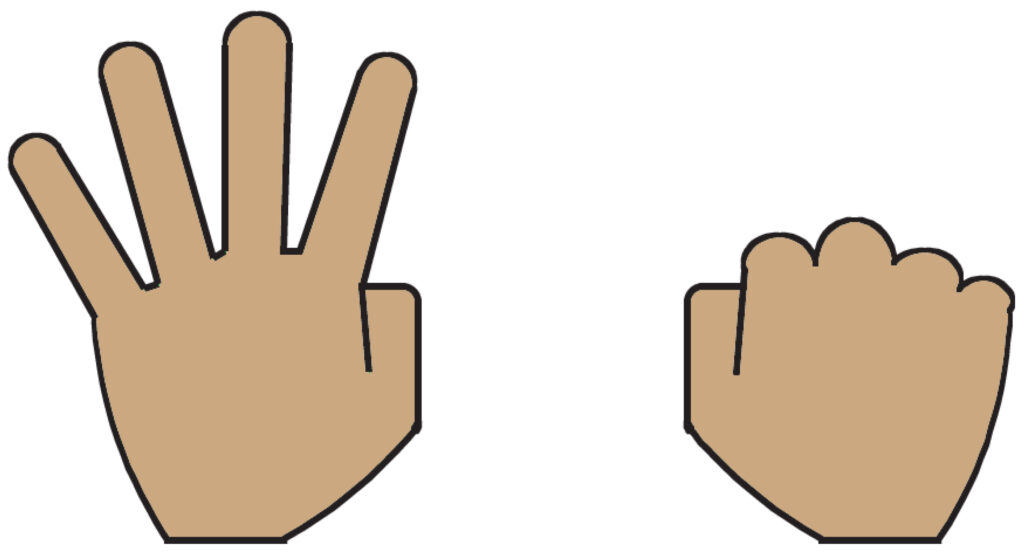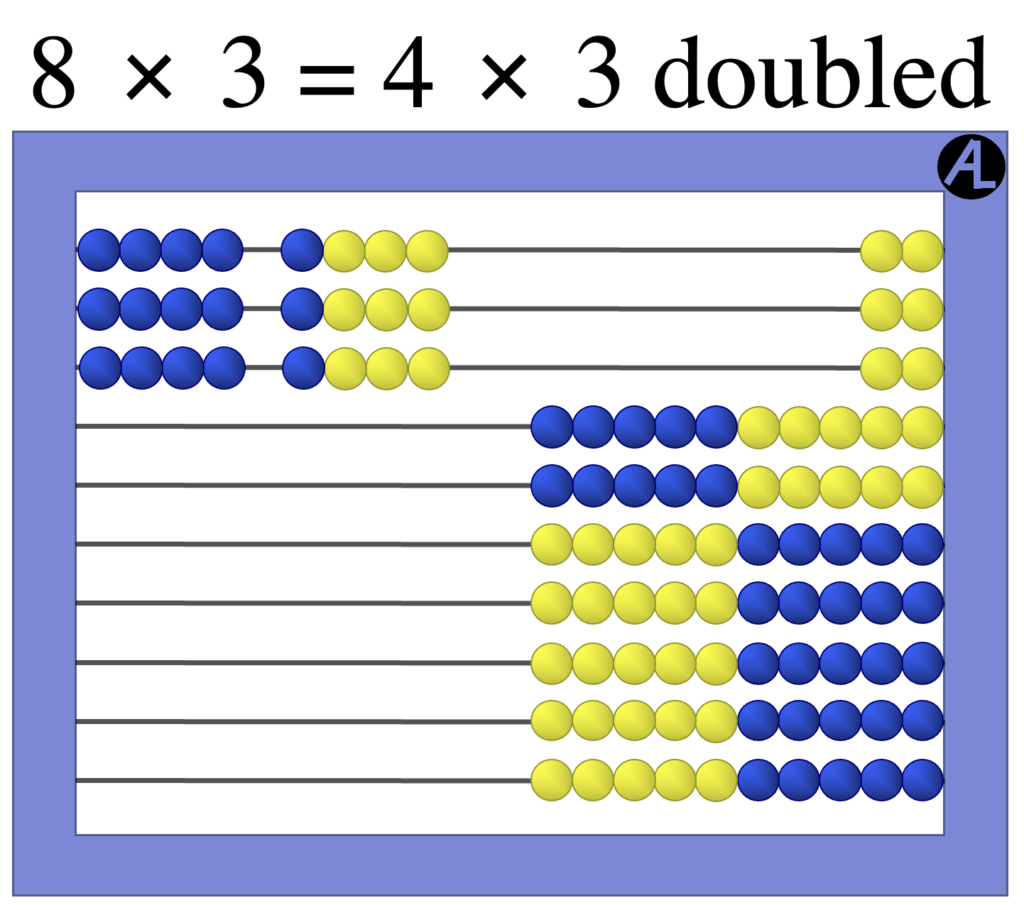There are ways a grandparent, family member, or friend can help a child with math. Here’s a list of seven things that will help teach math to your favorite young person.
1. Value math and show a positive attitude toward math.
Sadly, about 50% of Americans are afflicted with a strong distaste for math. Unfortunately, developing math anxiety becomes a severe handicap preventing a child from learning and benefiting from a good mathematics education.
Enjoy math with a child by playing math games. Games are much more productive than mindlessly flipping flash cards or trying to decipher some obscure problem on a worksheet.
2. Be an encourager.
Along with showing a love of math, we can be an encourager for the child. Helping with a math problem is like working on a jigsaw puzzle. You don’t show the child where every piece goes and you know mistakes are inevitable. Rather, we gently encourage persistence, often by asking questions. And we don’t offer a reward for every correct piece. Internal motivation is much stronger than external motivation.
3. Know what is real and what is a myth.
It is helpful to keep in mind math myths that are being transmitted and hurting the next generation. One myth is that you need a special math brain to be good in math. Nonsense! Virtually anyone with a human brain can learn mathematics. The rest of the world believes good instruction and some hard work are what it takes to master math.
Another myth is that boys are naturally better in math than girls. The only case where that might be true is in spatial relationships; researchers suspect this occurs because boys’ play is more visually oriented than girls’.
An especially damaging myth is that children must be able to spout their facts instantaneously. This was important in bygone days when humans did all the calculating. Today, electronic calculators and computers do the heavy work. Tragically, millions of people point to the obsession with flash cards and timed tests as the cause of their math trauma.
Another myth we would all like to believe is that the math we learned in school is sufficient and necessary for today’s students. The fact is that the field of math, just like science, is growing exponentially. The total amount of math known is doubling every seven years. One example is fractals, which was not a branch of mathematics until the 1970s, but now is the basis of some computer modeling, including movies like Jurassic Park.
4. Know when to use a calculator.
On the unnecessary list of math skills are finding square roots by hand (which I learned in ninth grade) and division by more than a single digit. Both take an inordinate amount of time to learn and do not contribute to deep understanding.
Neither of these “skills” are needed for advanced math. Square roots and division by two or more digits are best done with a calculator.
5. Subitize, not count.
Strange as it may seem, counting is NOT the basis of arithmetic. Traditionally, we spend several years teaching kids to be good counters; then we tell them to stop counting, because it is a bad habit!
Instead, teach the name of quantities, that four is 4, not 1, 2, 3, 4.

Researchers show that small babies can tell the difference between two and three teddy bears. We can recognize instantly the number of objects up to five without counting.
To recognize six to ten objects without counting, group into five and the 1 to 5 more. Teach seven as 7, without the need to count 1, 2, 3, 4, 5, 6, 7.

6. Help strengthen number sense understanding.
To make sense of advanced math, students need a deep understanding of concepts. This most basic knowledge is called number sense, which is grounded in place value. Number sense allows us to work flexibly with numbers.
If your protege says “ten-7” for seventeen, as RightStart Math does for a short period of time, do not correct them. Saying ten-7 reminds the child that 17 is 10 and 7 ones, not merely 17 ones.
As far as learning the facts is concerned, the task is much simpler with good number sense. It is much easier to remember something meaningful rather than an isolated fact. For example, to find 9 + 4, rather than start at 9 and count on 4 more to reach 13, a better strategy is to take 1 from 4 to change the 9 to a 10. Then 9 + 4 becomes 10 + 3 = 13.

Keep in mind a child is considered to know a fact if they can respond in 2 or 3 seconds; it’s okay to take time to think.
Number sense also helps for multiplication facts. The fact 8 × 3 can be thought as twice 4 × 3, that is 12 times 2, which is 24.

Or, 9 × 7 can be thought of as 10 × 7 – 7, which is 70 – 7 = 63.

7. Foster concentration.
We are hearing more and more today that people have short attention spans. But what is even more critical for children is their ability to concentrate. Sadly, television and screen time often interfere with children developing concentration because of frequent topic changing.
Concentration occurs when you become completely absorbed in what you are doing and are unaware of anything else. Concentrating while reading means you’re unaware of the act of reading. After concentrating you feel refreshed and satisfied. Real learning and understanding take place during concentration.
Paying attention, on the other hand, is forcing one’s mind to stay on a topic of little interest at the moment. It is very tiring. For children, the rule of thumb for paying attention is 1 minute per age in years. So a 5-year-old can pay attention for only 5 minutes.
Concentration is like sleep in that we cannot directly cause it. For either concentration or sleep, we can help by setting up favorable conditions and protecting the child from interruptions. That also means ignoring the clock and not ending an activity when a child is truly concentrating. Concentration span grows through practice, in the same way as a baby learns to sleep through the night.
The best way to help children learn math is to keep it fun. Encourage the child to persist through minor frustrations, and to use their number sense, their mathematical common sense. And point out all the many ways math is used in our world. It is all around us.

I love hearing what you have to say! As I teach my kids math, I’m finding I’m finally enjoying it for the first time in my life. It’s so refreshing to know that it’s ok to use a calculator for the more complex problems, and I love the concept of making multiplication easier by multiplying by an easier factor and then deducting or doubling the result.
I have learned so much from this article! I’m sharing the bit about “concentration” with my husband. I have noticed that the two of us frequently switch topics and interrupt homeschooling lessons to our daughter’s detriment. This article has helped me to pinpoint something we can easily do better to help foster her love of learning. My 8 year old loves RightStartMath!
I used Right Start Math when I homeschooled my children, two of whom went on to become engineers! The corners game was a favorite and my older children voluntarily came to the table to participate when my youngest was learning!
I have continued to tutor math and also offer my homeschool community “math labs” using the Teaching Textbooks curriculum! It has been a great asset!!
Can you provide a list of math games to play with kids ages 7-9
Hi, Angie.
We have a list of games for each level available on our website https://rightstartmath.com/resources/teaching-support/
From there, scroll down to the RS2 Games List and click on the level you are interested in.
Happy game playing!
Rachel